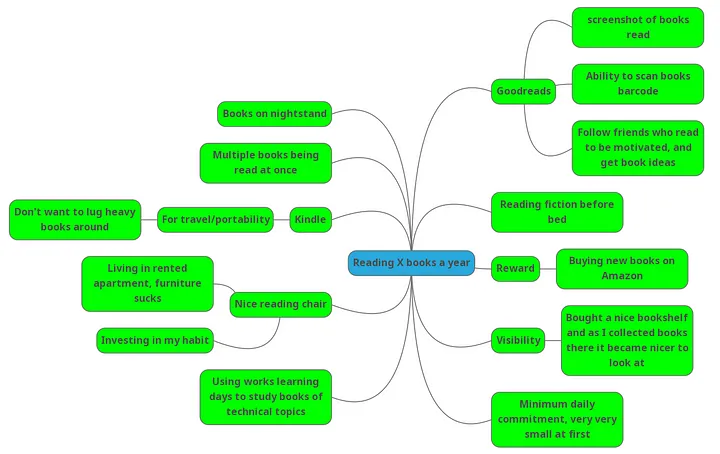I’m not an early bird by any means.
All through college I remember struggling to get up for my 11 am lectures.
Eventually, as I joined the working world my circadian rhythm shifted, and I found more time before work available for new habits.
Fortunately, my current role as a software engineer provides fairly flexible working hours. As a result, my working day starts at 10 am. Add to this the fact I work from home most days and I have the freedom to define my pre-work hours right up until my first meeting.
At the start of the year, I decided I wanted to start writing more consistently.
Here’s the current routine that I’ve been using so far to build momentum in my writing.
Use the mornings
At my current stage in life, I have no children, so my mornings are pretty peaceful. They are free for me to fill with the activities of my choosing.
That said, I’m not one to oppose a sleep-in whenever the opportunity is presented.
So at the start of my writing journey, I wanted to dedicate a consistent time to my writing, and the empty slot before work seemed most appropriate to use.
The 2 hours before work are particularly useful for writing as the day’s stresses haven’t hit you yet. Your mind is a little slow to get started, but once you are up and running the words tend to flow easily from your fingertips.
I also like to have a light breakfast in the morning; with peanut butter and banana on toast, followed by a cup of tea to have something warm by my side as I write.
Google Keep
The first thing I do once I sit down is go through my Google Keep list where I store all my article ideas. I write these down throughout my day as ideas pop into my head. Browsing this list, I pick the one that catches my fancy that morning.
Mind Maps
Next, I paste the article ‘seed’ from my Keep list into a mind map tool (I use mindmup.com). I’ll usually spend 15 minutes brainstorming ideas and popping them onto the map. I try to explore freely at this point without judgment and put anything and everything down there to help sprout more ideas. This will usually help me with the subheadings within my story and create a rough layout in my mind.
I can’t overstate how helpful this tool is for enabling me to visualise what I want to speak about and generate ideas.

As I work my way through the article I’ll change the colour of the mindmap bubbles to green once I have written about them. This helps me keep track of what ideas I haven’t explored yet.
Write freely, don’t edit
Once I have my mindmap complete and I have a nice set of ideas to work with I do my very best to write freely. I focus on not trying to edit my words as I write, which helps me get into the flow of production. At first, I find a lot of resistance as I pre-edit; editing my writing in my mind before it’s even written. But this is of course highly ineffective.
Acknowledging that your first draft isn’t going to be the one you submit is helpful because it allows you to enter the creative state and write without fear. If you are judging yourself constantly and trying to change the sentences you produce on the fly, it becomes very difficult to get into a good flow.
Grammarly
After the first pass is mostly complete, I will enable the Grammarly browser extension and quickly run it over the article and fix any grammatical errors. This takes less than a minute usually as I can just click on the red underlined text and correct the errors. I tend to mix up my “its” and “it’s” a lot, so this just saves me the trouble of searching for those.
Listen to your draft
Once you’ve completed the first draft of your article, I find it’s important to step away from it for a couple of hours. So usually I will write a draft of an article in the morning and then close my laptop. Then, that evening, or even the following morning, I will open the draft and paste my article into a text-to-speech service to listen to it outloud.
I find hearing your article read out to you is a great way to get a feel for its rhythm, and how it may sound in people’s heads once they read it. This is by far my best tool for spotting ugly sentence structures or wording that doesn’t quite fit, so I can’t recommend enough using this technique.
As I listen, I’ll pause often and go and update the article as I find issues. This is the stage where I do my major editing as I decide if pieces need to be moved around or cut.
Submission
Once I am happy with the final edits, I will go over the title, subtitle and header image to make sure I am happy with them, as these are the only things most people will see.
Finally, I will push my article up to my git repository before it’s automatically deployed to my site.
Once I push the article to my site, I can sit back and enjoy another article under my belt.
Slowly, I am improving my writing skills, and I attribute this to my writing routine and the discipline to keep at it, experimenting with what works and what doesn’t. It’s certainly a learning journey and one that I am very much enjoying.